Inside the Chargers' lavish new practice facility in El Segundo
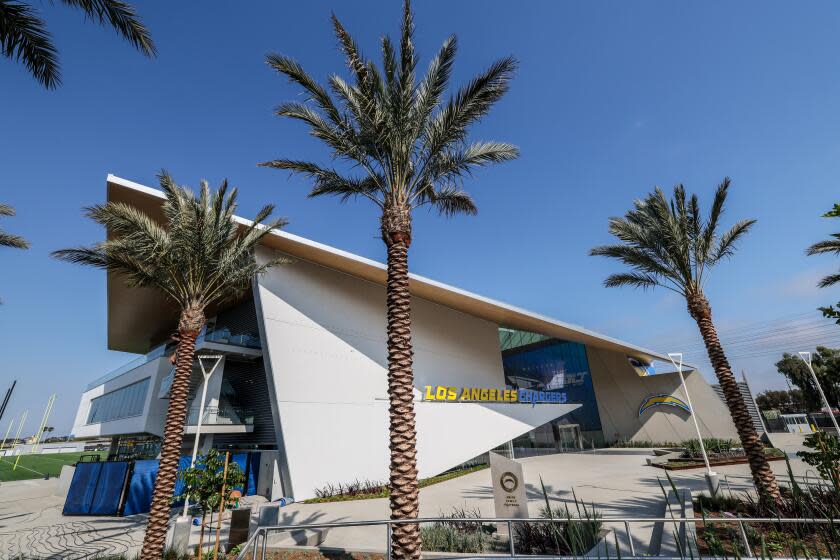
He called the journey “incredible” and “a crescendo,” with the Chargers’ move into their new facility now at the finish line.
The march to El Segundo, however, cannot be described using anything close to the word “swift."
“I was talking to some of the players,” Fred Maas said, “and I realized that when I started this, Joe Alt was 13.”
Alt today is the Chargers’ starting right tackle, the rookie entering the NFL in April as the No. 5 overall pick in the draft.
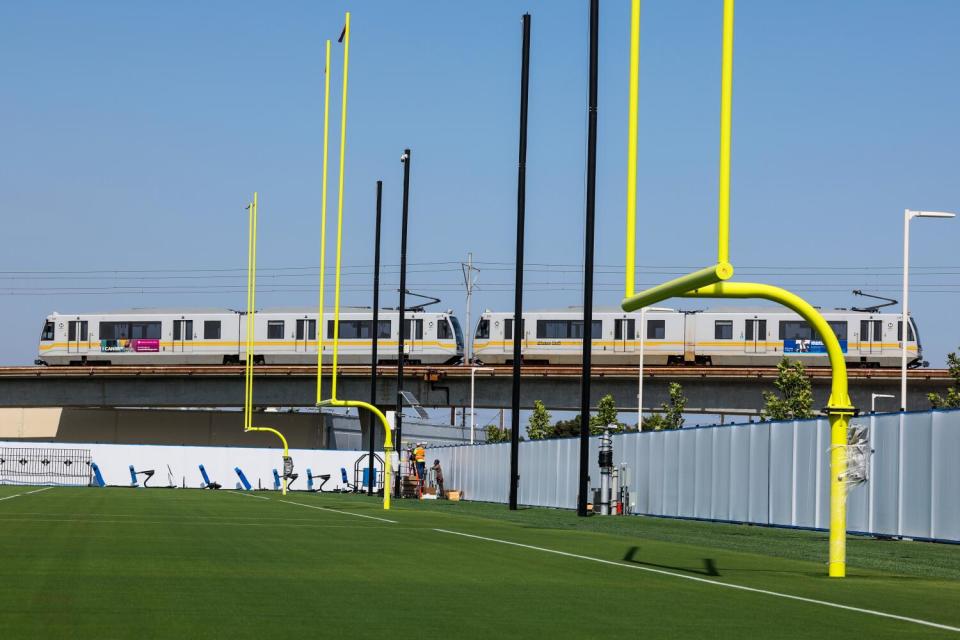
Maas, the team’s chief of staff, began the extensive search for a new home about the time the Chargers announced their relocation from San Diego in early 2017.
They eventually settled on 14 acres minutes from LAX, broke ground in May of 2022 and officially opened last month after seven seasons at a temporary headquarters in Costa Mesa.
“In terms of arrival moments in L.A., I think it was a huge step when we moved from Dignity (Health Sports Park) to SoFi (Stadium, in 2020),” Maas said. “This feels like the icing on the cake.”
The next stage comes when Chargers rookies report for training camp Tuesday, followed by the quarterbacks. The full team is set to open practice July 24 on the facility’s three natural-grass fields.
While there might be a sense of completion, the Chargers’ move remains very much in motion as new issues — missing electrical outlets, improperly matched TV brackets, failing refrigeration units — pop up daily.
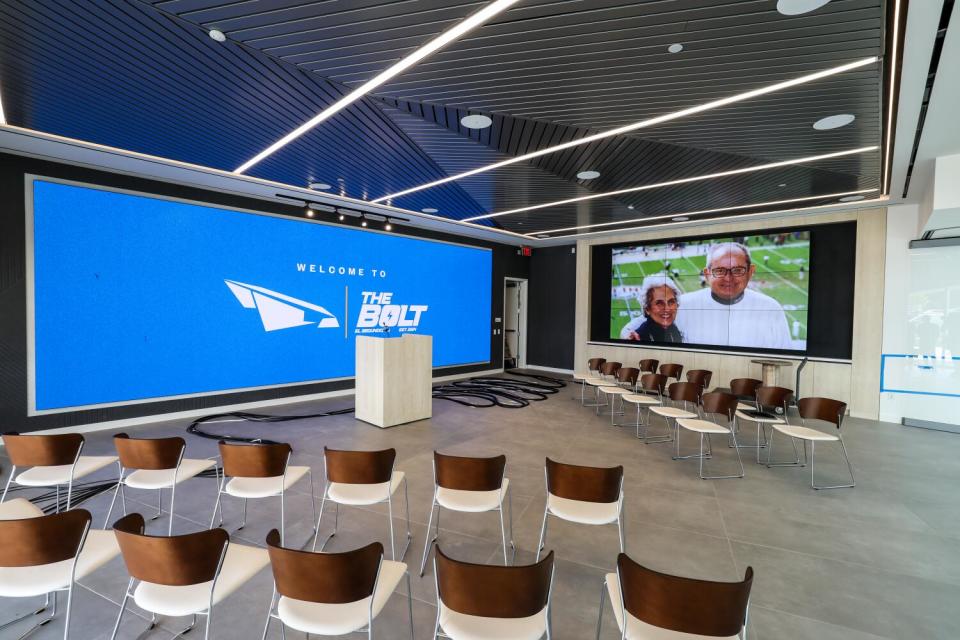
“Generally speaking, 80% of the problems come in the last 5% of a project,” said Maas, a veteran in the development business. “It sort of feels like that now. It’s an impressive building. We’ve accomplished a lot. But all I see are problems.”
The building is striking with its “Chargers Walk of Fame” leading to the front door, its three-story video screen in the lobby and its angled roofline designed as a nod to the team’s lightning-bolt identity.
In fact, much of the place is cut at pronounced angles — from the sidewalks outside to the staircase inside to the landscaping all about — as the Chargers embraced their branding.
“We sat down and said, ‘Let’s create something that’s really an icon for who we are,’” Maas said. “All of that is part of the DNA of what we wanted in having the building reflect the franchise.”
The “Walk of Fame” includes the 43 members of the Chargers’ hall of fame and was fashioned to resemble the star-lined sidewalks of Hollywood. To do the work, the team hired Top End Terrazzo, the company that created the world’s most famous walk of fame about 15 miles to the north.
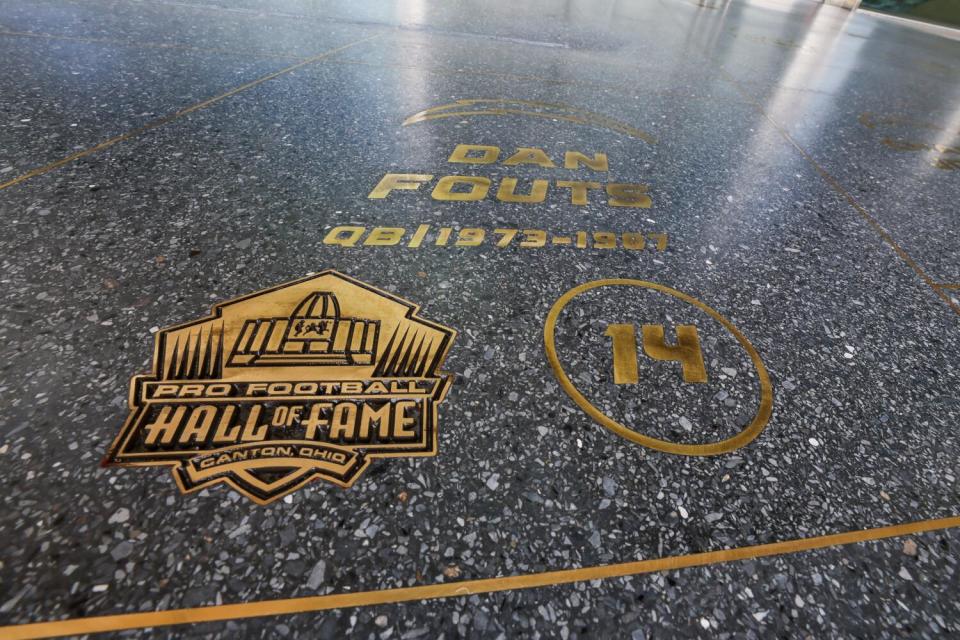
So names from the past like Lance Alworth, Dan Fouts and Kellen Winslow literally pave the way to the Chargers’ present, where the new building’s most weighty feature soon will greet visitors just inside the main entrance.
A desk is being sculpted in Santa Ana from a 48,000-pound blue-and-white — Chargers colors — rock that came from Brazil. The stone was so large that it had to be chopped into four sections before being transported.
The first floor includes an expansive locker room that can accommodate 104 players, plus numerous player lounges and an indoor/outdoor weight room that covers 11,000 square feet.
There’s an outdoor lap/rehabilitation pool not far from where athletic trainers will work with players managing injuries and new executive director of player development Ben Herbert will attempt to keep players from getting hurt in the first place.
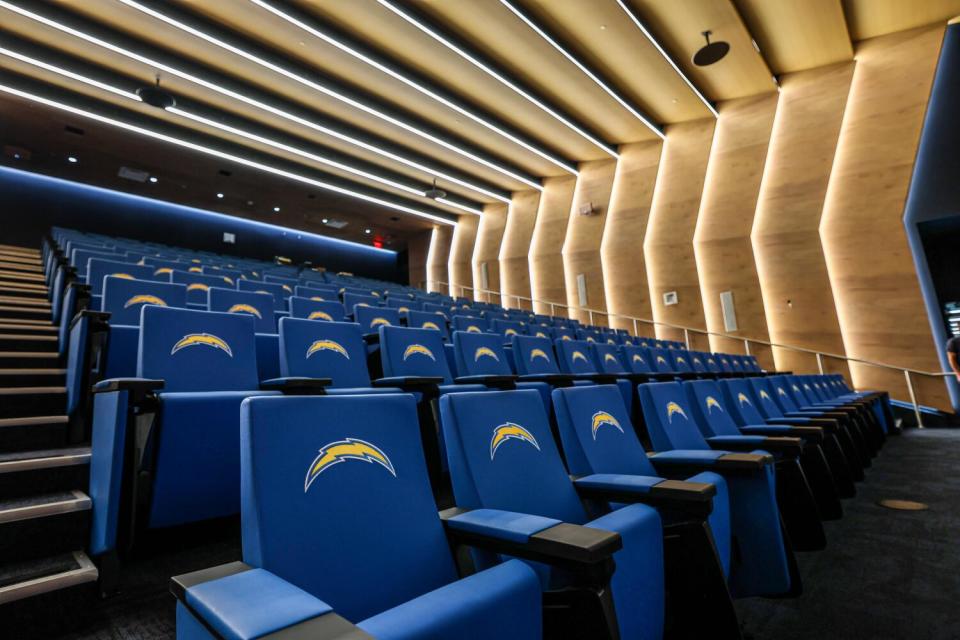
The building’s most impressive space might be one floor up — a two-story auditorium that will serve as the full-team meeting room. It’s equipped with seating for 173 and lined with theatrical-quality acoustic panels.
Maas described the auditorium as “Carnegie Hall meets the Chargers,” adding that the room will be available in the offseason as an event venue for functions outside the team.
The second floor is where the cafeteria and all the position-group rooms can be found along with an outside turf area for smaller walk-through teaching sessions.
The cafeteria will be run by Wolfgang Puck Catering — “I think it will be the rival of any business in L.A.,” Maas said — and features a pizza oven covered in mosaic tiles that looks like a Chargers helmet.
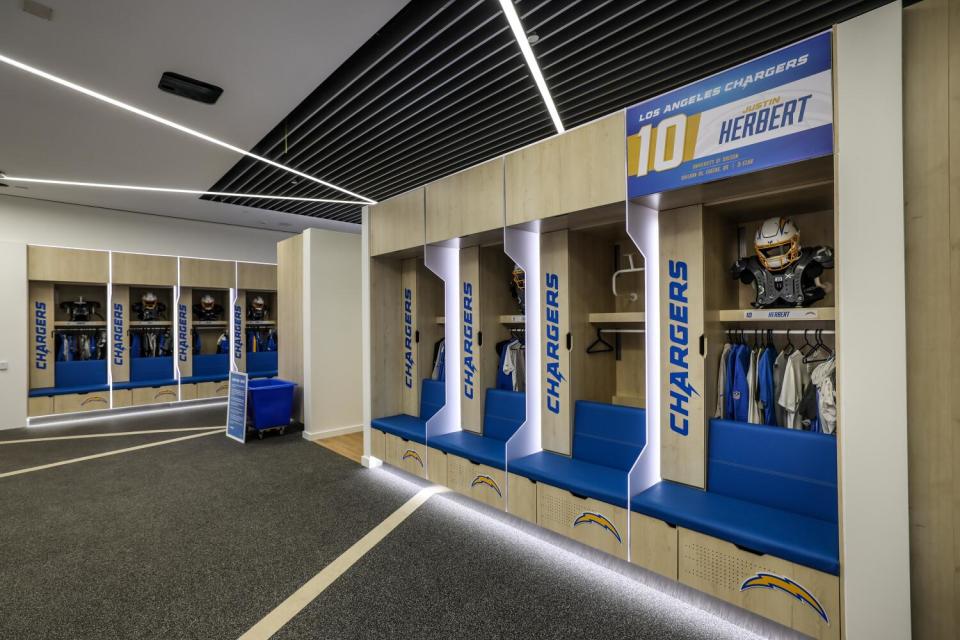
“The best statement of confirmation has been the players, who’ve come through and said, ‘Thank you for delivering all this to us,’” Maas said. “I’d never heard that before. That’s been encouraging.”
Much of the third floor is occupied by a private, membership-only indoor/outdoor club that will be available to corporate partners and fans seeking a more premium experience.
From the club’s wrap-around balcony, downtown Los Angeles, SoFi Stadium and — on clearer days — the Hollywood sign are all visible. The view is a significant upgrade for a team that spent seven years looking at the back of the Costa Mesa Ikea.
The Chargers are calling their new home “The Bolt,” a name coined by Jason Lavine, the team’s senior vice president of brand creative and content. Maas explained that the highly touted headquarters of the Dallas Cowboys offered some inspiration.
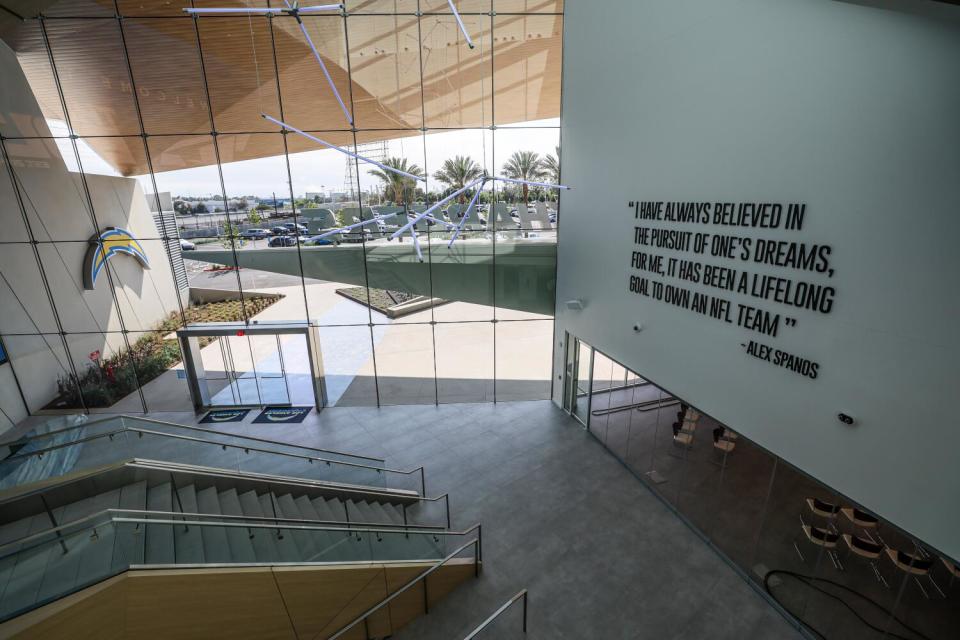
“Did ‘The Star’ have some influence on it?” he said. “Absolutely. But it’s really who we are. It embodies the organization, the brand. It just made sense. I think we all embraced it.”
For a team that used to practice in the parking lot of Qualcomm Stadium, the Chargers have entered a new era, a 150,000-square-foot exclamation point to the momentum generated this offseason.
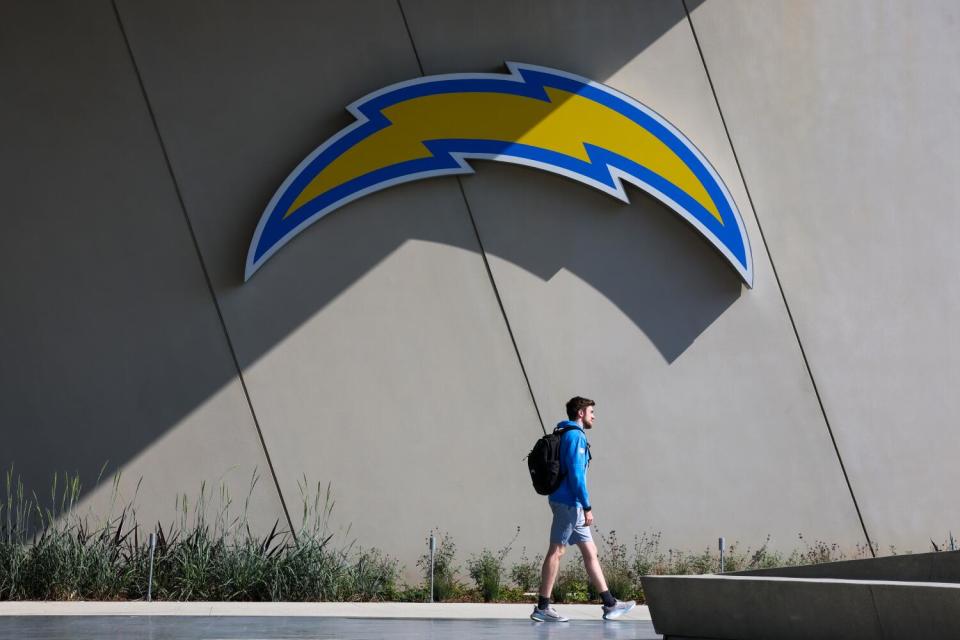
Since the arrival of Jim Harbaugh in January, this is a franchise that has been on the rebound, any questions about the Chargers’ long-term future in Los Angeles going silent.
“Now, it’s going to switch to how we perform on the field,” Maas said. “I got to tell you, I’ve never felt what we’re experiencing now with Coach Harbaugh and the stuff he’s doing. If we were a stock, I’d put an up arrow next to us.”
This story originally appeared in Los Angeles Times.
